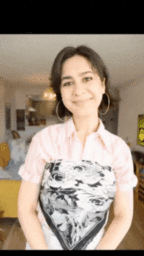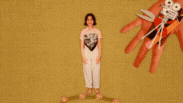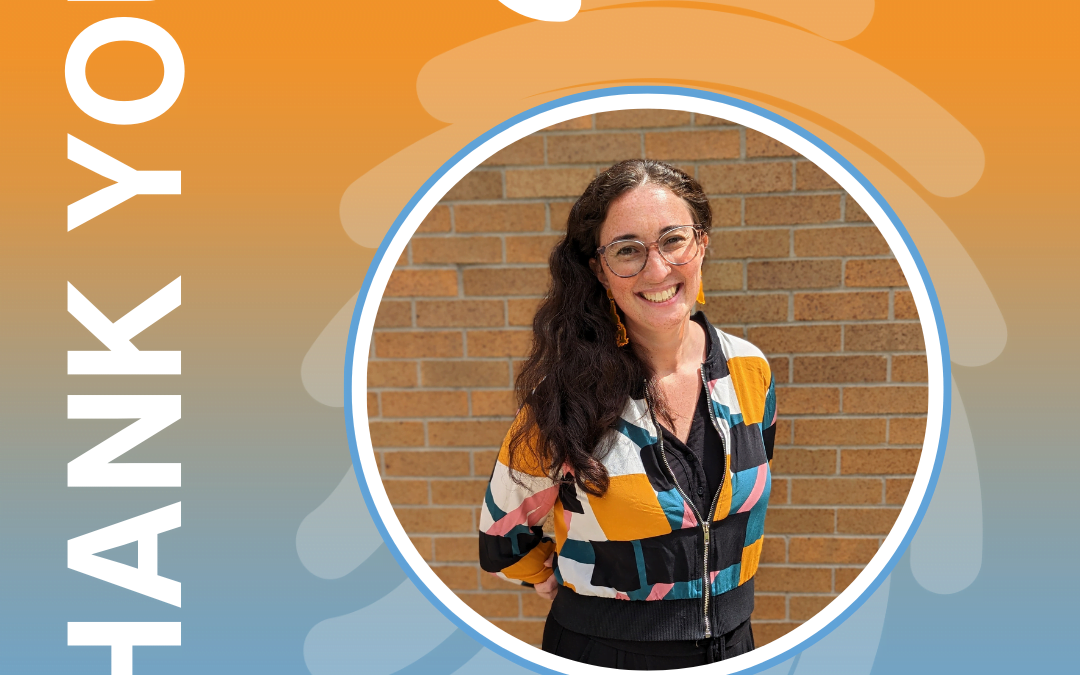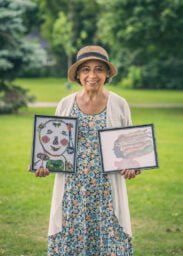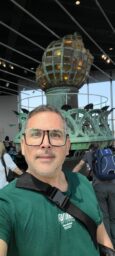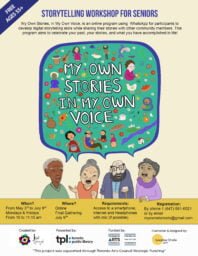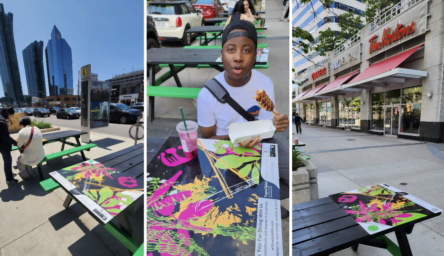
We asked Nima a few questions to give you a glimpse into the creative mind behind his practice. Get to know the inspiration and vision that fuels his artistry!
Question 1: What is one of the most valuable lessons you’ve learned through your art practice?
Patience has become a core lesson for me. With a naturally hyperactive mind, I used to be focused on quickly completing each piece, eager to move on to the next. My art practice, however, taught me to value the journey as much as the destination. Now, I approach my work with multiple sittings, allowing ideas to unfold and spending time testing my materials. I’ve found that the more I invest in understanding the medium and refining the approach, the richer
the final piece becomes. This patience has extended into my life, teaching me to appreciate processes and to take things step by step. It has made me a calmer, more grounded person, both in art and in life.
Question 2: What projects will you be focusing on during your time as a guest artist with North York Arts?
I’m excited to focus on bridging the gap between my two primary media: drawing and sculpture. This project is an opportunity to explore the intersection of two-dimensional and three-dimensional forms, creating works that balance line and physical structure. During this time, I’ll be sketching, researching, and documenting my ideas, building a foundational vision for this series. My goal is to compile this creative exploration into a grant proposal to help realize the
project on a larger scale. This time with North York Arts gives me the space to experiment and develop a solid framework to bring this concept to life.
Question 3: In what ways has North York influenced your art practice?
North York Arts has given me a sense of recognition that’s invaluable. Being part of their community, I feel seen and validated as a professional artist. It’s not just about exposure; it’s about belonging to a network that supports and encourages my growth. This recognition has boosted my confidence, allowing me to refine my voice and approach, knowing that it resonates with an audience. It’s empowering to feel that my art has a home and community here.
Question 4: Describe your creative process in three words.
Paradox, Connection, Exploration.

I thought I would share with you my process for making one of my stop motion videos, particularly the first social media post I made for North York Arts.
I knew I wanted it to be an introductory post about me so what better way to illustrate that than to make mini paper versions of myself.
My original idea had paper-me floating down, holding balloons that spell out my name. Once I land, a big hand comes out of one corner of the screen, waves, and then drops down a bunch of my favourite things (books, camera, a pencil, etc.). This scares paper-me but once I see that it means no harm I burst
out laughing.

I then type up my storyboard/ shot list. Take a bunch of pictures of myself in every pose. I go through and select the photos I’m going to use and add them to a word doc, alter the sizes of the photos and then print them out.

I do not have a colour printer, so I go over to my aunt and uncles house to print all my images and what I imagined was going to be a quick step ends up taking awhile because the images were coming out streaky and faded. My uncle fixes the printer but is very insistent that I don’t throw away the streaky images and maybe I could use them in the animation. I humour him but what I’m really thinking is I’ll use them as scrap paper. But then I think of the glitch segment, and my idea starts to change a bit and I turn some paper-me’s into glitching versions of me. I cut out all the pieces, I lay them in a book with some weights on top, so the paper doesn’t curl and I leave it in there for a couple of days.

Then on filming day I take out all my paper props and start figuring out my background. I originally wanted a giant crescent moon to hang from one side (I thought it would look cool and give it a vintage-y movie set look). So, I film it this way but the sizing looks off, so I scrap it.

In the second round of filming and editing I don’t like the moment the big hand comes in and drops off all the things I like around me. To me it looks too messy and it takes too long for all the items to settle into place.

So, I scrap what I shot again, and at this moment I don’t feel great, I never love having to reshoot something, because I always feel like I should be able to get it right the first time. But after shooting and editing each time I do get a bit closer to what I want it to look like.
I take a 10-minute break, try to gather my confidence, sit back down, and start again. This time I have my items come in from each side of the screen, I work in reverse which is much easier because then I can take my time laying it all out. I add in the scrunched up blue paper balls to add in more colour and fill up the space. I also add in my disembodied head popping in to say ‘hello’ and since I like that look, in the opposite corner I add in a tiny, disembodied hand waving. Then I do a rough edit to see if I like it or if I’ll need to reshoot it for a fourth time, but finally I am pleased with it.
Then all that’s left is to find the right audio, which is me going through my mini library of sounds I have created over the years and pulling in anything that piques my interest. I watch them with the visuals to see what works. The audio that I match with the glitch is just me scrunching up some paper but if you stretch it out it turns into this very electronic tinny sound which I thought worked perfectly with the
visuals of the glitch. I also reversed the audio clip to make it sound off. I love reversing an audio clip, because it makes me feel like a professional audio engineer, I doubt they do this, but I allow myself this one fantasy.
And that was my process for my stop motion animation I made for North York Arts. If you have any other questions, you can always DM me on Instagram @laura_kz
Experience the complete stop-motion animation below:

A beautiful new notebook. A seminar with my favourite poet. A website design upgrade.
The list of things I want to spend money on as a writer goes on and on. And they might all be worthwhile investments. After all, I have filled many notebooks with poetry and learned so much from classes and writing retreats in the past. However, I have also wasted precious pennies on the same things when I was spending money as a replacement for simply doing the work of being a writer.
Let’s be honest, I can establish a writing routine just as effectively with an old notepad and a pencil as with fancy software. And instead of dropping hundreds on a course, I can listen to talks by the world’s greatest writers for free online if I take the time to find them. I can also remind myself that a website upgrade will never be a more effective marketing tool than in-person networking.
Something I’m finally learning as a mid-career artist is that the enticing courses and slick technologies are never going to make me better at my craft or magically boost my career. At best they will enhance existing skills I’ve developed through practice, at worst I will be disappointed by the results.
We do sometimes need to invest in things like classes or new materials. But I’ve learned to be honest with myself about when those things are real investments or just distractions from the sometimes tedious discipline necessary to be an artist. My new approach is to “prove” to myself that I need something before spending money on it. I realized that if I was willing to spend my time and energy first, it would help me gauge more wisely (and more honestly!) if I should also put money towards it.
So for example, I wanted to brush up on my grammar skills because I felt like I was being too sloppy in my drafts and it made the editing process onerous. So I researched paid online courses, which I’m sure are great. But then I found a lot of free blog posts and videos by copy editors, as well as books available at the public library. I admitted to myself that even if I pay for a class I still need to show up for it with commitment and focus for it to benefit me. Turns out I can do that with the free materials I find too. In the end I felt like I had gotten what I was looking for simply by investing my time to research quality free content and study it.
Another time I was trying to learn about the publishing industry through the same approach and after months of research I still felt confused and disconnected from the industry. So I invested in a membership to a children’s writers association as well as a mentoring course with an author I admired. Both opened doors for me and I made back what I spent within a year. Waiting the extra few months trying the free approach didn’t hinder my career and it helped me take advantage of the content I paid for because I better understood its value.
So, I’m going to fill my current journal to the very last page before I go out and buy the turquoise moleskin I’ve had my eye on.

I don’t have any research to back this up but I do have a toddler…..
This month I attended an event at the University of Toronto called: Securing the future: Reimagining public spaces, opportunities, and supports for creative arts in a post-pandemic world
This two hour presentation and discussion explored some of systemic barriers that freelance artists face and how the pandemic amplified this inherent precarity, as well as a vision for the future. The event featured Melissa Wong, Director of Programmes, Arts Emergency; and Gareth Dylan Smith, Assistant Professor of Music, Music Education, Boston University; with Discussant Ely Lyonblum, Strategic Research Development Officer, Faculty of Music, University of Toronto.
There were a number of themes that emerged from this session that stood out for me related to collaboration, resource sharing and the fear of getting it wrong.
During the Covid 19 lockdowns artists collaborated more because they were all working towards a common goal: surviving. Informal support systems and grassroot movement sprang up resulting in strong artist networks. This resulted in more support and resources sharing between artists and organisations.
Covid 19 also allowed for a brief moment where artists and organisations had an opportunity to get things wrong. A rare opportunity in the arts sector to experience and focus on process and experimentation versus product.
However…. Where are we now? Are we any further along in addressing these challenges?
Then it occurred to me. I have a toddler and these themes come up on a daily basis.
Working together to solve conflicts or collaborating, sharing and being ok with getting something wrong and then trying again. These are (as far as I know) very basic lessons all young children need to learn.
When Julius doesn’t want to do something but we need him too, we talk about it, work together and compromise. It may still lead to a total meltdown but we keep trying to ingrain this idea of being a team and working together.
Sharing is an obvious one. Lucky for us Julius is very good at sharing. If he has some crackers and he sees someone in the room doesn’t, he’ll make sure they get one (sometimes maybe a bit too forcefully).
Getting things wrong and being able to try again. It is expected that children need to practise, nothing is perfect the first time, they fall and get up and fall and get up. Julius can get so upset when he doesn’t get it “right” all the time. We are constantly telling him to be kind to himself and that it’s ok and he can just keep trying. And he does. If he slips on the very last step, he says “try again” and he has to start over from the very beginning.
Why is it that this is so basic and fundamental in the development of children and yet… is it so radical for us to adapt in the creative sector?
These concerns that artists are talking about aren’t new to Covid. These are things I’ve experienced in my time as an artist and arts manager and have heard others say over and over again. Why can’t we figure this one out?
In Melissa Wong’s presentation she talked about the scarcity mindset. We are an industry of trying to survive on scraps. This leads to isolation, drives artists and organisations to hoard whatever resources we have and creates anxiety around being perfect because we can’t afford to lose a single dollar attempting anything new or innovative.
Let’s think about this in the context of a toddler room at any daycare. We have 10 children. Only 5 bowls of the beloved goldfish crackers. The workers give 3 bowls to one child and 2 bowls to another child. They tell the rest of the children to go sit by themselves and figure out how to get some crackers. On top of that they only have one chance to get it right or they won’t get any crackers at all… maybe ever.
We wouldn’t treat children that way but we often treat the arts that way. We appear to be working within a set of systems based on survival of the fittest, where the ‘sword of damocles’ is hovering over everyone’s head. On top of that we reinforce artists dependency on the few but vital dollars available through public funding agencies.
For me this begs the questions – How can we ask our young people to embrace collaboration, sharing or learning/exploring as values when we cannot seem to model it for them in our society. What can we do with what we learned throughout the pandemic to empower the arts and move it to a more sustainable future? How do we stop just talking about it and actually do it?
I don’t have those answers. However, I do believe our greatest resource as a sector is our audiences and more to the point investing in the future generations, our future advocates and audiences. We might benefit from thinking less about what will serve us best tomorrow and start thinking about what will serve the arts community best in 10, 20, 30, 50 years. If we as arts workers really care about the impact of the arts and investing in communities, I believe we need to start thinking about how we get there together and how we can inspire the broader non-arts community to come with us.

To North York, With Love,
It is with a mix of emotions that I write to you today to share some news: after several years of incredible experiences, I will be bidding farewell to my role at North York Arts.
Since the spring of 2016, I have had the immense privilege of being part of this vibrant organization. I started at NYA as an intern, new to arts administration and a newcomer to Canada, here I found a supportive community that made me feel at home. The journey has been filled with inspiring collaborations, and the opportunity to contribute to the rich cultural tapestry of North York.
During my time here, I have been fortunate to work alongside a team of dedicated staff, volunteers, artists, and partners who share a passion for nurturing creativity and fostering artistic endeavors. Together, we have brought numerous programs and events to life for the North York communities.
While it is bittersweet to say goodbye, I am filled with gratitude for the invaluable experiences and relationships I have gained during my time. The lessons learned and memories made will always hold a special place. So today I thought I would share with you 3 programs at NYA that have shaped my career while working at NYA:
My Art, My New Land – In 2016, as I embarked on my arts administration career as a newcomer, there was a movement from immigrant and newcomer artists advocating for enhanced support and services within the arts community for themselves and their peers.
During this time, ‘My Art, My New Land’ emerged as bridging program for newcomer artists to better understand the Canadian arts landscape, spearheaded and created by at the time North York based artist Aitak Sorahitalab.This program served as a valuable introduction to the Canadian arts landscape for newcomer artists, with North York Arts proudly stepping in as a partner for its inaugural edition.
NYA has continued its role in supporting newcomer artists on their journeys, recognizing their importance and the profound impact they have on the artistic landscape.
Art Connects – In 2019, our team at NYA (we were four at the time) led internally by Melissa Foster, gathered in a circle with Elder Joanne Dellaire and Indigenous leaders and artists Veronica Johnny and Aqua Nibii Waawaaskone. We delved into a crucial question: ‘As a non-Indigenous organization, what can we do to support the process of decolonization and build the right relations with Indigenous communities?’
Those conversations left a lasting impression on me, I still hold in me a lot of what was shared during those circles, striving to honor those teachings in my work.
Art Connects has consisted of multiple components and phases, all of which have centered Indigenous artists. Truth and reconciliation is a continued process and there are missteps and mistakes that will happen, they are inevitable. But I’m proud of the strides the organization has made in addressing the initial question posed at the start of this project. I trust that the work to build right relations with Indigenous artists and communities will continue.
Mapping Our Neighbourhoods – Narrowing down three projects from the multitude NYA has produced and partnered on during my time here wasn’t an easy task. I found myself constantly changing my choices because there are just so many impactful programs. However, Mapping Our Neighbourhoods will always hold a special place in my heart.
2020 and 2021 were difficult years. On top of everything, we were grappling with how to create meaningful online programming amidst a global pandemic. A lot of wonderful arts programming emerged during that time including NYA’s animation program for seniors (another favourite of mine).
The Mapping Our Neighbourhoods program was born out of discussions on how to keep youth engaged and employed in the arts during those years. It remains one of my personal favorites, go check out the short film and illustrated map that were created by youth through the program. Created through collaborative brainstorming with my colleague Julian Carvajal, Mapping Our Neighbourhoods provides a platform for young creatives to collaborate with lead professional artists, crafting art pieces that reflect their unique stories about North York neighborhoods.
From all of us at North York Arts, we’re extending a huge thank you to Cecilia for all of her hard work and dedication to our artists, programs and community. Cecilia is focused, dedicated, leads with integrity and care and has been deeply appreciated and respected by artists, partners, co-workers, volunteers and Board members. These traits will be so valuable in her career ahead. Cecilia – we will miss you and wish nothing but the best in your future endeavors. THANK YOU!!
%27%20fill-opacity%3D%27.5%27%3E%3Cellipse%20fill%3D%22%23252d2f%22%20fill-opacity%3D%22.5%22%20rx%3D%221%22%20ry%3D%221%22%20transform%3D%22matrix(-36.77189%20375.02871%20-127.96003%20-12.5466%20747.2%20611.9)%22%2F%3E%3Cellipse%20fill%3D%22%231f2829%22%20fill-opacity%3D%22.5%22%20rx%3D%221%22%20ry%3D%221%22%20transform%3D%22rotate(-56.7%20693.3%2072.7)%20scale(225.98236%20165.84812)%22%2F%3E%3Cellipse%20fill%3D%22%23bcc8c8%22%20fill-opacity%3D%22.5%22%20rx%3D%221%22%20ry%3D%221%22%20transform%3D%22matrix(-152.21719%20-67.45337%20141.15335%20-318.53065%20120%20126.4)%22%2F%3E%3Cellipse%20fill%3D%22%23e7766b%22%20fill-opacity%3D%22.5%22%20rx%3D%221%22%20ry%3D%221%22%20transform%3D%22matrix(153.27835%2011.48135%20-17.03831%20227.46482%20533.8%20308.8)%22%2F%3E%3C%2Fg%3E%3C%2Fsvg%3E)
Greetings North York Arts Community,
Navigating the vibrant arts scene, the non-profit realm, and the dynamic world of financial services technology, I’m excited to share a glimpse into my diverse roles.
First of all, I would love to start with my passion for the arts and its transformative effect. I find that art inspires me and helps me spark new ideas, creating space to reflect and explore new concepts. I really enjoy going to museums and attending shows and musicals. Recently, I was captivated by the spellbinding performances of “Fall For Dance North” and “Jagged Little Pill.” These shows added a layer of cultural richness to my life. Hope some of you were also able to catch these shows!
Secondly, as a Board Member and Chair of the Fundraising Committee at North York Arts, I find myself energized when I find ways to help communities and the arts get closer together, all the while learning new skills (this is my first time leading a Fundraising Committee). I find fulfillment in supporting various non-profits, volunteering on two additional boards, as well as providing mentoring and coaching to newcomers in their journey to settle in Canada. I find that nowadays, as we see so much division in the world, we can make a difference by contributing to create connections in our communities.
Finally, I also have a full-time role in banking. Within the banking sphere, my focus lies in finding opportunities to infuse new technology, leveraging innovation to bring new solutions to banking offerings. This job requires me to be constantly looking for opportunities and connecting the dots. I absolutely love this job to the point I feel I would even do it for free (hope no one from work is reading this article!).
So, do you see a common thread here? I hope you do! I sometimes don’t 🙂 Joking aside, I think at the centre of it all is my ability to stay curious and willingness to find connections.
And you would ask about the balancing act? I have to admit that I am not 100% successful all the time in balancing the intricacies of a banking career, parenting two wonderful daughters, making sure I make space to enjoy the arts and continue volunteering in the non-profit sector but…
and there is always a but…
I find satisfaction in knowing that I am heading, in general, in the right direction.
So, at the end of the day, the arts inspire me to stay curious, sparking more energy in my life. Behold – the transformative power of art in action!
Grateful,
Fabiana Montoya
North York Arts Board Member, Fundraising Committee Chair, Volunteer at Two Other Non-Profit Boards, Innovator in Banking, and Proud Parent
%27%20fill-opacity%3D%27.5%27%3E%3Cellipse%20fill%3D%22%23000301%22%20fill-opacity%3D%22.5%22%20rx%3D%221%22%20ry%3D%221%22%20transform%3D%22matrix(-5.62544%20-169.82%20539.7954%20-17.88122%20314.5%20645.4)%22%2F%3E%3Cellipse%20fill%3D%22%23fff%22%20fill-opacity%3D%22.5%22%20rx%3D%221%22%20ry%3D%221%22%20transform%3D%22matrix(-224.78175%2069.47069%20-116.84326%20-378.06207%20978%20294.5)%22%2F%3E%3Cellipse%20fill%3D%22%23fff%22%20fill-opacity%3D%22.5%22%20rx%3D%221%22%20ry%3D%221%22%20transform%3D%22matrix(-24.16275%20239.48016%20-318.05715%20-32.0909%2065.8%20203.2)%22%2F%3E%3Cellipse%20fill%3D%22%23c17185%22%20fill-opacity%3D%22.5%22%20rx%3D%221%22%20ry%3D%221%22%20transform%3D%22rotate(-171.3%20276%2033.5)%20scale(137.83945%20522.90127)%22%2F%3E%3C%2Fg%3E%3C%2Fsvg%3E)
Meet Bill!
I am the Board Chair of North York Arts. I am a Chartered Professional Accountant and a senior financial professional and have worked in a variety of industries and roles primarily helping organizations that are undergoing transition. However, I am not your typical accountant.
I have a love and passion for music – especially jazz! After many years of visiting jazz clubs and attending jazz festivals, I decided to further my interest and appreciation of this musical genre by volunteering last summer with the TD Toronto Jazz Festival. Volunteering at an event like the jazz festival is not only a lot of fun, but it allows volunteers to network with a group of like-minded individuals who are passionate about jazz, all while listening to some great music! Many volunteers get hooked on the volunteer experience, make some good friends, and return year after year to partake in the positive energy of the festival. The sense of camaraderie and teamwork that came out of the festival this year was inspiring, and it serves as a reminder of the power of community and collaboration.
Festivals enrich the lives of many and have a huge economic impact on the city’s economy. The TD Toronto Jazz Festival attracts more than 500,000 loyal patrons annually over 10 days as more than 1,500 musicians entertain across the city. Toronto hosts a diverse range of festivals focused on satisfying all interests such as food, culture, art, holidays, and music. I encourage anyone who has some free time to get involved with a festival they are interested in and be a part of a wonderful celebration of culture and community!
%22%20transform%3D%22translate(.5%20.5)%22%20fill-opacity%3D%22.5%22%3E%3Cellipse%20fill%3D%22%23bdbdbd%22%20cx%3D%229%22%20cy%3D%22182%22%20rx%3D%2226%22%20ry%3D%22190%22%2F%3E%3Cpath%20fill%3D%22%23010101%22%20d%3D%22M222%20256H120v-56h102z%22%2F%3E%3Cellipse%20fill%3D%22%23b6b6b6%22%20rx%3D%221%22%20ry%3D%221%22%20transform%3D%22matrix(-37.20506%20-.13156%20.25378%20-71.76758%2064.9%20255)%22%2F%3E%3Cellipse%20fill%3D%22%233a3a3a%22%20rx%3D%221%22%20ry%3D%221%22%20transform%3D%22rotate(-135.2%2046%20-16.7)%20scale(46.17927%2072.37204)%22%2F%3E%3C%2Fg%3E%3C%2Fsvg%3E)
%22%20transform%3D%22translate(.5%20.5)%22%20fill-opacity%3D%22.5%22%3E%3Cellipse%20fill%3D%22%23d0dadf%22%20rx%3D%221%22%20ry%3D%221%22%20transform%3D%22rotate(98.7%2040.4%2059.2)%20scale(46.89366%20186.05978)%22%2F%3E%3Cellipse%20fill%3D%22%23110c1f%22%20cx%3D%22191%22%20cy%3D%22188%22%20rx%3D%2269%22%20ry%3D%2269%22%2F%3E%3Cellipse%20rx%3D%221%22%20ry%3D%221%22%20transform%3D%22rotate(115.3%20-75.3%20131)%20scale(70.75983%2041.54478)%22%2F%3E%3Cellipse%20fill%3D%22%23a1b046%22%20rx%3D%221%22%20ry%3D%221%22%20transform%3D%22matrix(19.32526%20-55.32459%2057.37072%2020.03999%2076.2%20109.2)%22%2F%3E%3C%2Fg%3E%3C%2Fsvg%3E)
%27%20fill-opacity%3D%27.5%27%3E%3Cellipse%20fill%3D%22%2321282a%22%20fill-opacity%3D%22.5%22%20rx%3D%221%22%20ry%3D%221%22%20transform%3D%22matrix(-302.81715%2091.67862%20-70.08597%20-231.496%20896.4%20614.6)%22%2F%3E%3Cellipse%20fill%3D%22%23e6ac9f%22%20fill-opacity%3D%22.5%22%20rx%3D%221%22%20ry%3D%221%22%20transform%3D%22rotate(-95.6%20373.7%2035.7)%20scale(648.84548%20134.64256)%22%2F%3E%3Cellipse%20fill%3D%22%23bce2da%22%20fill-opacity%3D%22.5%22%20rx%3D%221%22%20ry%3D%221%22%20transform%3D%22rotate(-155.8%20488.2%20-84.6)%20scale(266.81725%20129.46457)%22%2F%3E%3Cellipse%20fill%3D%22%23454c4e%22%20fill-opacity%3D%22.5%22%20rx%3D%221%22%20ry%3D%221%22%20transform%3D%22matrix(93.5278%20-5.8042%2066.63326%201073.71565%2051.8%20359.3)%22%2F%3E%3C%2Fg%3E%3C%2Fsvg%3E)
I am a passionate storyteller. I have been able to tell stories in multiple ways using dozens of mediums. I studied arts for 8 years at a fine arts school in Santiago de Cali, Colombia where I am originally from. I have had the privilege to experience firsthand the use of multiple mediums to tell stories. Many of my friends don’t know but I have been writing since I was a child. I have been too shy to write in English because I always have the language fear. I have won awards back home in poetry and my tales and poems were published since I was 7 years of age. I am very passionate about writing and telling stories. I started my own anthology of stories and poems to talk about the feelings I developed when I was first diagnosed with Diabetes Mellitus Type I in 1999. It was really hard for me to describe the way my body was feeling and the way I was feeling in relation to others and my relation to the food.
My Mom studied Gerontology, and while she was going to her practices with my sister and me, I developed this profound love and admiration for seniors. I respect them a lot and I decided to do something to ensure they had an opportunity to express themselves, tell us their stories and celebrate who they are as well as their ancestry. I was able to pilot the program during COVID thanks to the financial support of North York Arts.
This organization believed in the program and my skills to run it. For 10 weeks, Mondays and Fridays became a space for dialogue, a positive space of support and comfort; a space where seniors expressed their feelings and their anguish, their fears, and their concerns. We laughed, cried, kept silent, sang together, danced in the distance, told stories, celebrated countries and their traditions, shared recipes, knitting techniques, and much more!
Thanks to the connection we had with participants a couple of things happened. Personally, I was able to develop a new diagram to make stories more interesting taking them to a deeper level that I didn’t even imagine myself. I call them the Octopus Diagrams. In order to tell stories sometimes, we need to ask the right questions and think and ask out of the box. Creative elements were added to the stories beyond linear storytelling.
Since May 2020 until now, I have had the pleasure of engaging with over 80 seniors, 4 different organizations, and collaborating with Paula Solano, illustrator, to enhance the participants’ stories.
HERE you can take a look at one of the iterations of the program with TPL. If you happen to know Spanish you can listen to the final audios and a teaser of how the program ran HERE.
%22%20transform%3D%22translate(.5%20.5)%22%20fill-opacity%3D%22.5%22%3E%3Cellipse%20fill%3D%22%232f2b3f%22%20rx%3D%221%22%20ry%3D%221%22%20transform%3D%22rotate(-81.9%2085.8%20-57.9)%20scale(43.8243%20181.99998)%22%2F%3E%3Cellipse%20fill%3D%22%23b7bf93%22%20rx%3D%221%22%20ry%3D%221%22%20transform%3D%22rotate(-95.5%20117.6%2042.5)%20scale(75.80678%2099.10611)%22%2F%3E%3Cellipse%20fill%3D%22%23a19cbc%22%20cx%3D%2288%22%20cy%3D%22144%22%20rx%3D%2248%22%20ry%3D%2248%22%2F%3E%3Cellipse%20fill%3D%22%2331322d%22%20cx%3D%22169%22%20cy%3D%2225%22%20rx%3D%2240%22%20ry%3D%2272%22%2F%3E%3C%2Fg%3E%3C%2Fsvg%3E)
%22%20transform%3D%22translate(.7%20.7)%20scale(1.41406)%22%20fill-opacity%3D%22.5%22%3E%3Cellipse%20fill%3D%22%23918da1%22%20cx%3D%22125%22%20cy%3D%22102%22%20rx%3D%2286%22%20ry%3D%2286%22%2F%3E%3Cellipse%20fill%3D%22%23364400%22%20rx%3D%221%22%20ry%3D%221%22%20transform%3D%22rotate(-96.7%20164.5%20-65.6)%20scale(153.29827%2036.53148)%22%2F%3E%3Cellipse%20fill%3D%22%23526300%22%20cy%3D%2244%22%20rx%3D%2245%22%20ry%3D%22168%22%2F%3E%3Cellipse%20fill%3D%22%23454545%22%20rx%3D%221%22%20ry%3D%221%22%20transform%3D%22matrix(.92937%20-15.64304%2021.5718%201.2816%20126.3%20173)%22%2F%3E%3C%2Fg%3E%3C%2Fsvg%3E)
%27%20fill-opacity%3D%27.5%27%3E%3Cellipse%20fill%3D%22%23303d16%22%20fill-opacity%3D%22.5%22%20rx%3D%221%22%20ry%3D%221%22%20transform%3D%22matrix(128.719%208.32388%20-14.95087%20231.19742%2056.3%2044.7)%22%2F%3E%3Cellipse%20fill%3D%22%23c2c9cb%22%20fill-opacity%3D%22.5%22%20rx%3D%221%22%20ry%3D%221%22%20transform%3D%22rotate(107.8%20175%20148.6)%20scale(89.82046%20126.41177)%22%2F%3E%3Cellipse%20fill%3D%22%23c94f7b%22%20fill-opacity%3D%22.5%22%20rx%3D%221%22%20ry%3D%221%22%20transform%3D%22matrix(-32.11197%2056.98956%20-92.8867%20-52.33896%20379%20227.5)%22%2F%3E%3Cellipse%20fill%3D%22%23594f5d%22%20fill-opacity%3D%22.5%22%20rx%3D%221%22%20ry%3D%221%22%20transform%3D%22matrix(172.21987%2077.94918%20-40.25814%2088.9458%20198.1%20223.3)%22%2F%3E%3C%2Fg%3E%3C%2Fsvg%3E)
%27%20fill-opacity%3D%27.5%27%3E%3Cellipse%20fill%3D%22%23c1abab%22%20fill-opacity%3D%22.5%22%20rx%3D%221%22%20ry%3D%221%22%20transform%3D%22matrix(17.00968%2034.58465%20-94.7482%2046.59975%2031.8%20135.5)%22%2F%3E%3Cpath%20fill-opacity%3D%22.5%22%20d%3D%22M123.8-43.2l25.4%2088.4-150%2043L-26.2-.2z%22%2F%3E%3Cellipse%20fill-opacity%3D%22.5%22%20rx%3D%221%22%20ry%3D%221%22%20transform%3D%22matrix(113.1223%20-14.1189%203.13804%2025.1423%2039.6%2018.8)%22%2F%3E%3Cellipse%20fill%3D%22%2301764f%22%20fill-opacity%3D%22.5%22%20rx%3D%221%22%20ry%3D%221%22%20transform%3D%22rotate(-139.6%2064%20107.2)%20scale(62.90707%2028.72479)%22%2F%3E%3C%2Fg%3E%3C%2Fsvg%3E)
%27%20fill-opacity%3D%27.5%27%3E%3Cpath%20fill%3D%22%2390d3ce%22%20fill-opacity%3D%22.5%22%20d%3D%22M115.5-5.5l-62%20113-33-122z%22%2F%3E%3Cellipse%20fill%3D%22%23646b00%22%20fill-opacity%3D%22.5%22%20rx%3D%221%22%20ry%3D%221%22%20transform%3D%22matrix(74.84739%20-32.3007%2018.3807%2042.5919%20115.6%20229.2)%22%2F%3E%3Cellipse%20fill%3D%22%23d02d52%22%20fill-opacity%3D%22.5%22%20rx%3D%221%22%20ry%3D%221%22%20transform%3D%22matrix(-39.62247%20-2.49283%201.28353%20-20.40106%20125.5%2034.3)%22%2F%3E%3Cellipse%20fill%3D%22%231d8066%22%20fill-opacity%3D%22.5%22%20rx%3D%221%22%20ry%3D%221%22%20transform%3D%22matrix(75.19758%20-27.72253%2019.93483%2054.07337%20111.3%20125.5)%22%2F%3E%3C%2Fg%3E%3C%2Fsvg%3E)
%22%20transform%3D%22translate(.5%20.5)%22%20fill-opacity%3D%22.5%22%3E%3Cellipse%20fill%3D%22%23208973%22%20rx%3D%221%22%20ry%3D%221%22%20transform%3D%22rotate(113.8%2018%2079.2)%20scale(62.39136%2056.70941)%22%2F%3E%3Cellipse%20fill%3D%22%23fff3ec%22%20rx%3D%221%22%20ry%3D%221%22%20transform%3D%22matrix(-18.197%20-196.15777%2028.12299%20-2.6089%20184.4%20117.4)%22%2F%3E%3Cellipse%20fill%3D%22%23fffeee%22%20cx%3D%2266%22%20cy%3D%22243%22%20rx%3D%22196%22%20ry%3D%2220%22%2F%3E%3Cellipse%20fill%3D%22%23cdd06a%22%20rx%3D%221%22%20ry%3D%221%22%20transform%3D%22rotate(93.8%20-44.1%20147.3)%20scale(29.70826%20156.27973)%22%2F%3E%3C%2Fg%3E%3C%2Fsvg%3E)
![Thank you for joining us at Inspire North!]()
Thank you for joining us at Inspire North!
An extra special thank you to our incredible photographers, Maria Vega, Ricky Yu, and Shoeb Kadri.
%22%20transform%3D%22translate(2.1%202.1)%20scale(4.21875)%22%20fill-opacity%3D%22.5%22%3E%3Cellipse%20fill%3D%22%23beccc9%22%20cx%3D%2285%22%20cy%3D%22146%22%20rx%3D%22177%22%20ry%3D%2237%22%2F%3E%3Cellipse%20fill%3D%22%231e281f%22%20rx%3D%221%22%20ry%3D%221%22%20transform%3D%22matrix(33.45439%2061.72596%20-87.17907%2047.24953%20197.7%200)%22%2F%3E%3Cellipse%20fill%3D%22%23b6455a%22%20rx%3D%221%22%20ry%3D%221%22%20transform%3D%22matrix(68.39532%205.11108%20-3.40294%2045.53736%20239.3%2093.4)%22%2F%3E%3Cellipse%20fill%3D%22%23b84971%22%20rx%3D%221%22%20ry%3D%221%22%20transform%3D%22matrix(76.25805%204.50113%20-1.75085%2029.66283%2054.4%2076)%22%2F%3E%3C%2Fg%3E%3C%2Fsvg%3E)
When I was a young creative growing up in North York, I knew I was drawn to the arts. But, at the time, I had limited access to opportunities that developed my toolkit for beautifying spaces, sparking conversations, and amplifying marginalized voices – myself included. It took interning at North York Arts, mentorship from community arts organizations VIBE Arts, Sketch, and JAYU, and peer support from talented artists to really make this emerging artist, facilitator, and arts administrator begin feeling confident. With these experiences, I make it my mission to give back to the community, especially youth, through arts education and community engagement – be it through my arts administration roles for community-based programming, my art by sharing my story, and through arts facilitation/mentorship by sharing what I’ve learned during my artistic journey.
I am so grateful that my story and my passion have led me to connecting with artists, creatives, and changemakers who have taken chances on me to create change in my community.
Journaling Your Cultural Collage (JYCC) is a reflective and explorative arts & wellness program I designed with youth in mind. Funded by RBC Foundation and VIBE Arts with community partners North York Arts and YIELD, this program uses digital collage and various forms of journaling to affirm identity and practice self-care. Artists were able to compile a photobook and appreciate various cultures and walks of life by sharing stories and learning how to create artist statements.
%22%20transform%3D%22translate(.7%20.7)%20scale(1.36328)%22%20fill-opacity%3D%22.5%22%3E%3Cellipse%20fill%3D%22%2300002f%22%20rx%3D%221%22%20ry%3D%221%22%20transform%3D%22rotate(174.2%20105.6%2089.7)%20scale(72.22409%2048.64516)%22%2F%3E%3Cellipse%20fill%3D%22%2393a659%22%20cx%3D%22129%22%20cy%3D%2283%22%20rx%3D%22138%22%20ry%3D%2234%22%2F%3E%3Cellipse%20fill%3D%22%2356001c%22%20cx%3D%2210%22%20cy%3D%22170%22%20rx%3D%2243%22%20ry%3D%2243%22%2F%3E%3Cellipse%20fill%3D%22%239c5318%22%20cx%3D%2280%22%20cy%3D%22154%22%20rx%3D%2250%22%20ry%3D%2250%22%2F%3E%3C%2Fg%3E%3C%2Fsvg%3E)
StreetARToronto Evelyn Wiggins Cycle Track brought me back to my university days where I could design and paint a mural near York University. It was very fulfilling being able to beautify the neighborhood where I learned about Cultural Artistic Practice and Visual Art. Thank you to the curatorial, administration, and health and safety team for supporting artists!
%22%20transform%3D%22translate(.8%20.8)%20scale(1.61719)%22%20fill-opacity%3D%22.5%22%3E%3Cellipse%20fill%3D%22%23232c26%22%20rx%3D%221%22%20ry%3D%221%22%20transform%3D%22matrix(103.3132%20-12.86834%208.77423%2070.44375%20180.4%203.3)%22%2F%3E%3Cellipse%20fill%3D%22%23bed1cd%22%20rx%3D%221%22%20ry%3D%221%22%20transform%3D%22matrix(162.36973%2021.76402%20-5.07046%2037.828%20135.7%20151.6)%22%2F%3E%3Cellipse%20fill%3D%22%23ba475b%22%20rx%3D%221%22%20ry%3D%221%22%20transform%3D%22matrix(54.29289%20.10872%20-.08355%2041.72067%20226.6%2090)%22%2F%3E%3Cellipse%20fill%3D%22%23b74970%22%20cx%3D%2262%22%20cy%3D%2273%22%20rx%3D%2266%22%20ry%3D%2231%22%2F%3E%3C%2Fg%3E%3C%2Fsvg%3E)
Photo credit: Gage Fletcher @gage.fletcher
Yonge North York BIA x STEPS – Cafe TO is exciting because I ate (and continue to eat) at so many restaurants in WIllowdale and revisited many family memories. I remember when Sheppard Centre had the movie theatre and Pizza Pizza was one building south, but now I have my art on picnic benches in front of many places I’ve witnessed change!
%27%20fill-opacity%3D%27.5%27%3E%3Cellipse%20fill%3D%22%233c7be0%22%20fill-opacity%3D%22.5%22%20rx%3D%221%22%20ry%3D%221%22%20transform%3D%22rotate(-72.3%2021.9%20-24.2)%20scale(63.1242%2099.28707)%22%2F%3E%3Cellipse%20fill%3D%22%234c454c%22%20fill-opacity%3D%22.5%22%20rx%3D%221%22%20ry%3D%221%22%20transform%3D%22matrix(1.85517%2044.26312%20-112.58356%204.71865%2035.1%20101.2)%22%2F%3E%3Cpath%20fill%3D%22%234c4a46%22%20fill-opacity%3D%22.5%22%20d%3D%22M305.3%20213.3h78v81.5h-78z%22%2F%3E%3Cpath%20fill%3D%22%23c3c1be%22%20fill-opacity%3D%22.5%22%20d%3D%22M32%20278.4H-2.5v-62.5h34.7z%22%2F%3E%3C%2Fg%3E%3C%2Fsvg%3E)
L-R Tropical Splash in front of Yonge Sheppard Centre, Eating ChungChun with little bro on Byng Ave, Tropical Splash near North York Blvd.
VIBE Arts NExT Black Mentorship Exhibition was my first ever art exhibition and it was the greatest because I was able to bring my community into Meridian Arts Centre and connect with wholesome Black artists. I also juggled my arts administration and artist hats being the Education & Engagement Coordinator at TO Live. As an artist, I created a digital collage and painting series called Persephone’s Panganat that spoke to my mixed race identity and I felt so seen, especially celebrating with my North York neighbours who came on opening night.
%22%20transform%3D%22translate(.8%20.8)%20scale(1.57031)%22%20fill-opacity%3D%22.5%22%3E%3Cellipse%20fill%3D%22%23eedbd5%22%20cx%3D%22117%22%20cy%3D%22157%22%20rx%3D%2226%22%20ry%3D%22197%22%2F%3E%3Cellipse%20fill%3D%22%23596974%22%20rx%3D%221%22%20ry%3D%221%22%20transform%3D%22rotate(-179.4%2090%2016.4)%20scale(29.83679%2094.93416)%22%2F%3E%3Cellipse%20fill%3D%22%23ef9046%22%20rx%3D%221%22%20ry%3D%221%22%20transform%3D%22matrix(.606%2043.39816%20-79.50615%201.11019%2018.3%20130.5)%22%2F%3E%3Cellipse%20fill%3D%22%23a5d5d6%22%20cx%3D%22255%22%20cy%3D%2241%22%20rx%3D%2256%22%20ry%3D%2256%22%2F%3E%3C%2Fg%3E%3C%2Fsvg%3E)
%27%20fill-opacity%3D%27.5%27%3E%3Cellipse%20fill%3D%22%23dedfe9%22%20fill-opacity%3D%22.5%22%20rx%3D%221%22%20ry%3D%221%22%20transform%3D%22rotate(-96.3%2083%20-53.1)%20scale(60.07219%20356.93755)%22%2F%3E%3Cellipse%20fill%3D%22%2339301f%22%20fill-opacity%3D%22.5%22%20rx%3D%221%22%20ry%3D%221%22%20transform%3D%22matrix(-13.67348%2087.21613%20-189.32735%20-29.68217%20342.7%20183.5)%22%2F%3E%3Cellipse%20fill%3D%22%238f700c%22%20fill-opacity%3D%22.5%22%20rx%3D%221%22%20ry%3D%221%22%20transform%3D%22matrix(-195.26325%2012.94046%20-1.76357%20-26.61108%20332.5%20238.8)%22%2F%3E%3Cellipse%20fill%3D%22%23252b31%22%20fill-opacity%3D%22.5%22%20rx%3D%221%22%20ry%3D%221%22%20transform%3D%22matrix(-52.91727%201.97055%20-1.75249%20-47.06138%20293.7%20163.7)%22%2F%3E%3C%2Fg%3E%3C%2Fsvg%3E)
VIBE NExT Black Mentorship 3.0 cohort
There is so much more to share, but alas word counts get the best of memories, so I would be honoured if you could support my artistic journey by following me on Instagram @articulately_jasmine. You are also invited to the Gardiner Museum x VIBE Arts FREE community celebration on August 16 @ 6:30pm!



